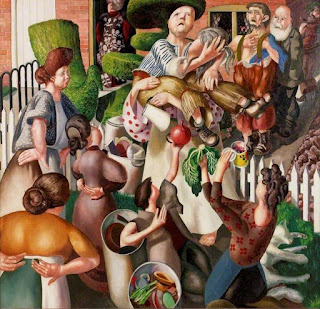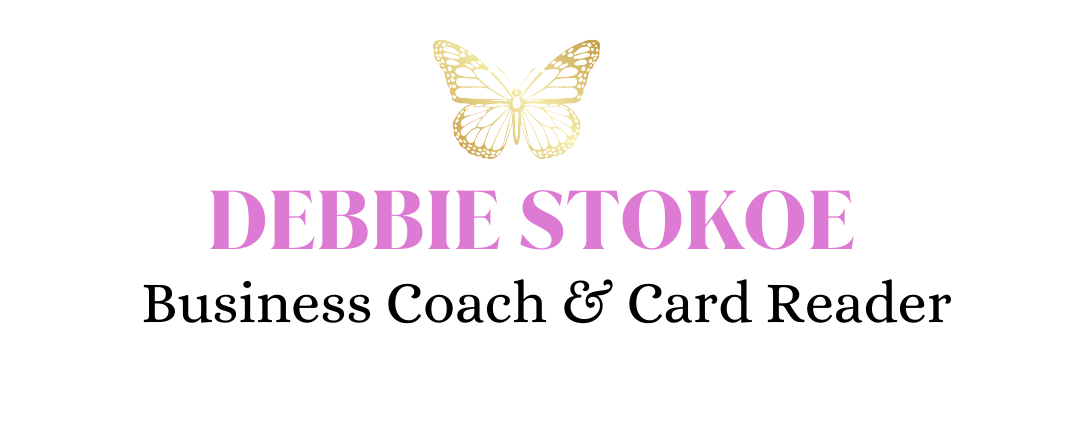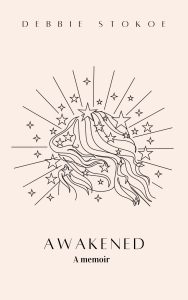What is it about getting older that makes people start spending more time in gardens and garden centres, and green fingers appearing overnight? For me, it’s been a happy coincidence of slowing my life down. Working for myself has allowed me to spend more time outside, working and also just being. For years I was running around, fuelled by some sort of chaos engine, and didn’t realise the importance of finding time to stop and smell the roses. Now I make sure I spend time in nature every day. I find myself seeking out walled gardens on holiday and buy myself flowers every week. Growing vegetables is really appealing to me. I feel much calmer. All of this is probably the reason why I was pulled to visit the Laing’s latest exhibition,
The Enchanted Garden. And the fact that includes a
Monet. But let me tell you, there’s way more to this exhibition than the work of one legendary artist.
The exhibition brings a painting in the Laing’s permanent collection,
Stanley Spencer‘s ‘The Dustman or The Lovers’ into the context of 90 other major works by British and French artists which “explore the garden as a stage for the magical, extraordinary, the atmospheric and the nostalgic.” (I’m sold). It also showcases the work of
Edward Burne-Jones,
Francis Bacon,
Dante Gabriel Rossetti,
William Morris,
Vanessa Bell and Stanley Spencer, to name but a few. Works have been lent from museums such as The Tate, The National Gallery and the William Morris Gallery.
 |
| The Dustman or The Lovers by Stanley Spencer (date) |
The exhibition spans three main rooms and features paintings (as well as works on paper and books) where artists have taken inspiration directly from gardens that have played a part in their lives, which makes for a fascinating journey which spans the pre-Raphaelites and French Impressionists to the Bloomsbury Group and 20th century abstract art.
 |
| From top left – Guinea Pigs Gardening by Beatrix Potter courtesy F. Warne & Co and the V&A Museum, Cottage With Figure by Helen Allingham (Laing Art Gallery), Sappho and Erinna in a Garden At Myteline (1864) by Simeon Solomon, Woman with Lillies (1876) by Thomas Armstrong (Laing Art Gallery) |
Room 1 really took me back to my childhood, with
Beatrix Potter drawings and watercolours by
Cicely Mary Barker (who created the Flower Fairies). I was really taken with Potter’s ‘Guinea Pigs Gardening’ (1893) which she drew after borrowing guinea pigs from a friend. I was also drawn to the dilapidated charm of
Helen Allingham‘s idyllic cottage garden. The Secret Garden (
Frances Hodgson Burnett) was one of my favourite books as a child and it pops into my head every time I visit a walled garden so it was great to see a first edition included in the exhibition.
“Might I,” quavered Mary, “might I have a bit of earth…to plant seeds in – to make things grow – to see them come alive?” – The Secret Garden
I loved the goddess qualities of the women depicted in ‘Sappho and Erinna in a Garden at Mytilene’ (1864) by
Simeon Soloman (a Victoria pioneer of gay visual art) and the realism of ‘Woman with Lillies’ (1876) by Thomas Armstrong. By the late 1800s owning a garden was a mark of status, and artists thrived on audiences idealising the rural past. I also spent a lot of time with ‘Rose for the Invalid’ by Newcastle artist
Ralph Hedley (1894), in which a young woman in Staithes is picking roses to brighten up the room of someone who is ill.
 |
| ‘Rose for the Invalid’ by Ralph Hedley (1894) |
Room 2 is where you’ll find the majority of the works, including the magnificent ‘The Orchard’ by Dod Proctor, who specialised in painting monumental female figures in the 1920s. I loved the use of colour in ‘Lucie Cousturier in her Garden’ by
Maximilien Luce (1913-1918 – she was a French painter and writer who’s work was neglected during her lifetime).
In the late 19th and early 20th century, groups of artists congregated around houses where gardens played an important role, for inspiration and peace. William Morris’s gardens at the Red House and later at Kelmscott Manor. Artists with work included in the exhibition such as Dante Gabriel Rossetti, Edward Burne-Jones and Phillip Webb all inspired by these spaces. Morris’s daughter Mary was inspired by being at Kelmscott and was an accomplished artist in her own right.
 |
| From top left – The Orchard by Dod Proctor (1934), Lucie Cousturier in her Garden (1890-1905) by Maximilien Luce, View of Kelmscott Manor From The Old Barn (1880s) by Mary Morris, Design for Trellis by William Morris and Phillip Webb (1862) |
I’m a little obsessed with the Bloomsbury Set, especially all things Virginia Woolf and Vita Sackville-West, so it was good to see some of their first editions included (Sackville-West’s The Garden/Woolf’s short story Kew Gardens). Sackville-West was a poet, novelist and garden designer who had a brief affair with Woolf and fought openly for the right to love freely.
Although it’s a thrill to see a Monet in any exhibition, Water Lillies, Setting Sun (1907) isn’t one of my personal favourites, but I still really like what he did with the light, especially the pink and yellow rays of the setting sun and the reflection of the weeping willow.
 |
| Water Lillies, Setting Sun (around 1907) by Claude Monet – The National Gallery, London |
I enjoyed the section ‘The Ordinary Made Extraordinary’ in which religious scenes take place in ordinary gardens and landscapes (I’ve been reading a lot about Mary Magdalene and the Divine Feminine). I was amazed to see a painting by an unknown Italian artist from the mid 1300s included (Noli me tangere) depicting Jesus appearing to Mary Magdalene after the Resurrection to comfort her. He tells her not to touch him as he does not want his followers to cling to his physical presence.
 |
| (Noli me tangere 1350-1375, Courtaud Gallery) |
When I first laid eyes on The Garden of Eden by William Roberts (1926) I was initially quite shocked then I thought it was genius (even though in no way do I agree with the idea of Eve being the source of original sin and the reason for the fall of man). It must have taken some guts to depict Adam and Eve in this way at the time it was painted.
 |
| The Garden of Eden (1926) by William Rober |
There’s so much more to this exhibition than just famous names. I left realising that my recent burst of creativity can be put down to spending more time in beautiful places lately. The exhibition was like taking a time machine to look at how people enjoyed being outdoors through the ages, and made me realise that nature is responsible for some of our greatest works of art. I am also a fan of how women and LGBTQ artists are represented in the exhibition.
The Enchanted Garden is at The Laing Art Gallery until Sunday 7th October. Admission is £12 (adult with donation), £10 without donation. Find out more about tickets and opening hours
here.
There’s also a wide range of workshops, activities, lectures and Summer Art Schools to accompany the exhibition, find out more
here.








